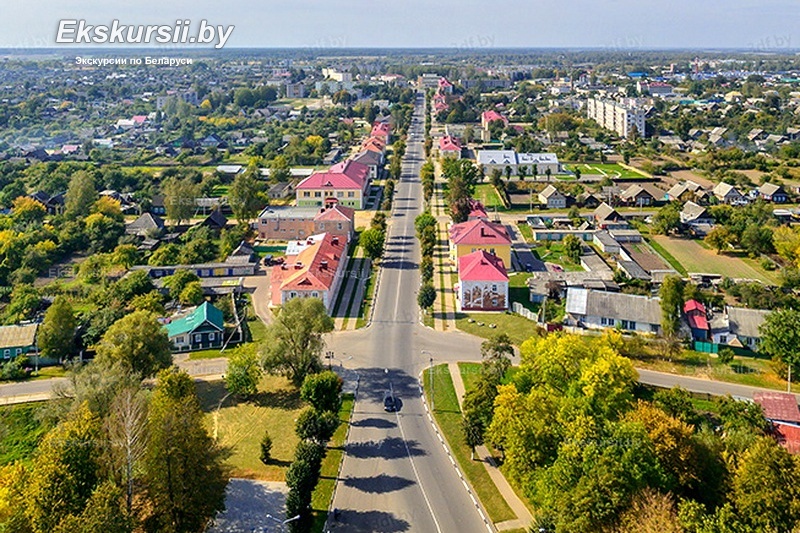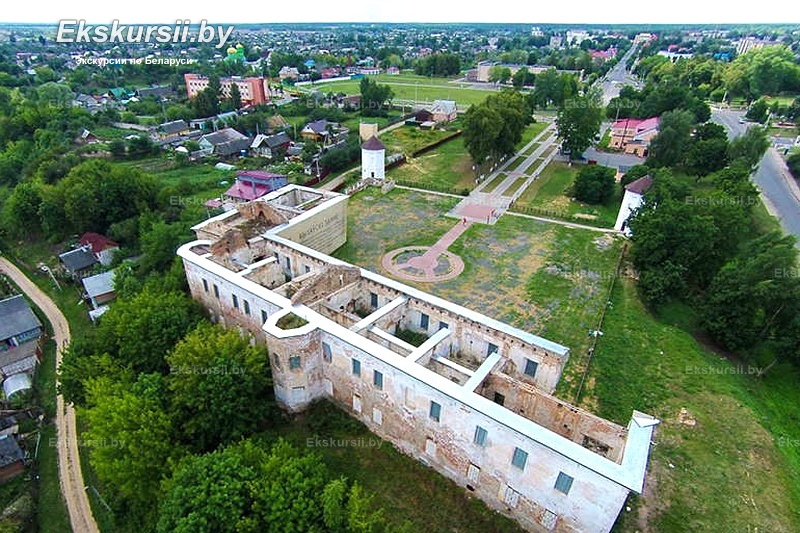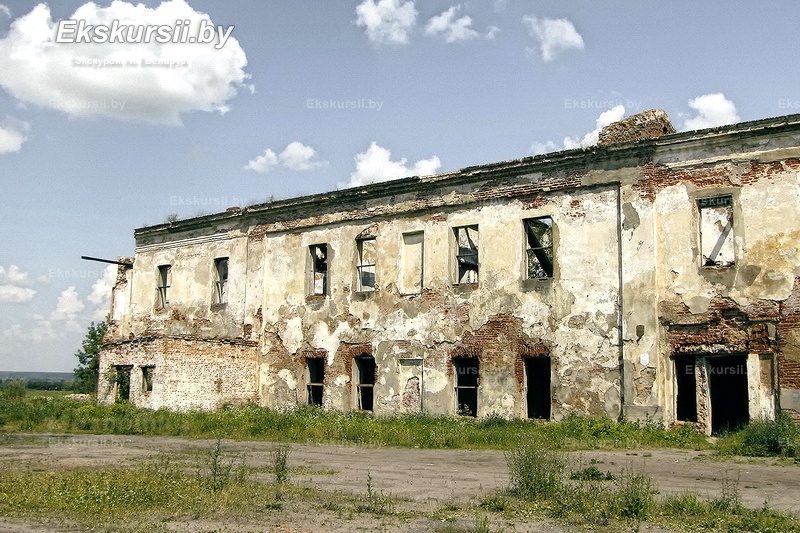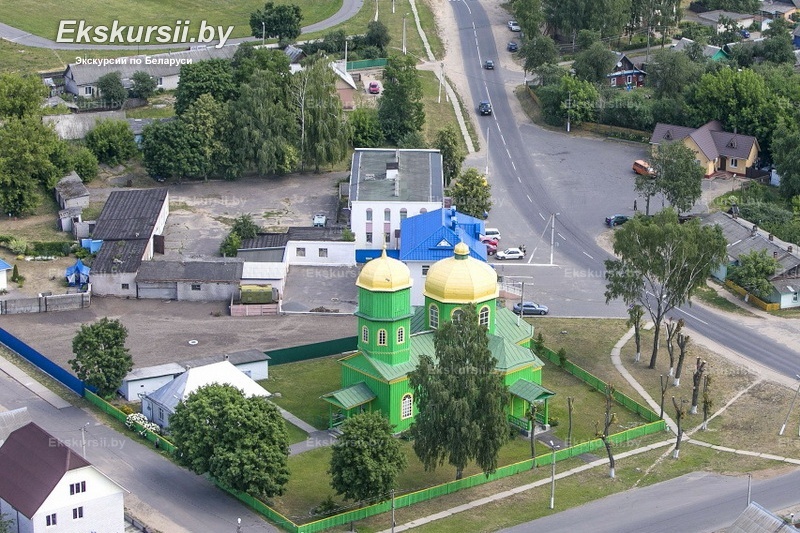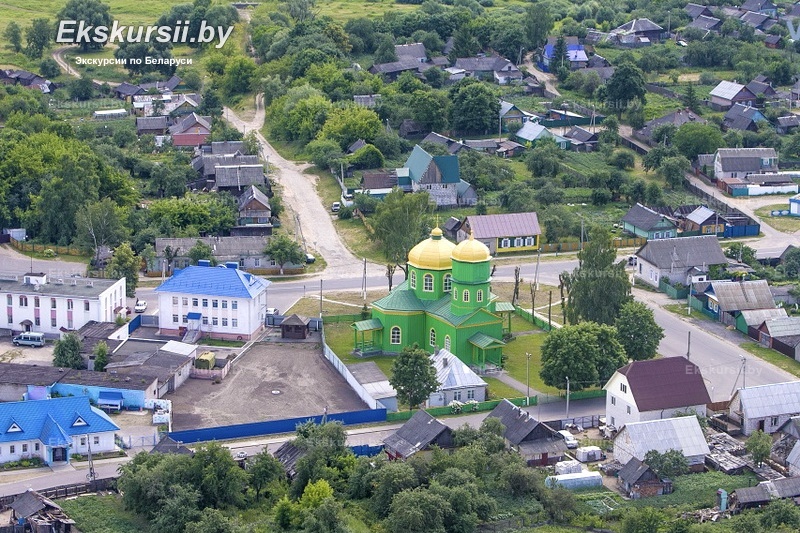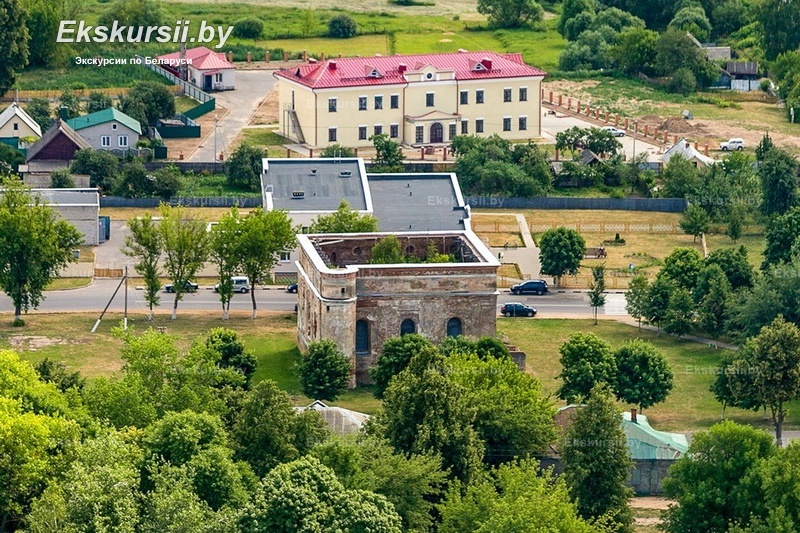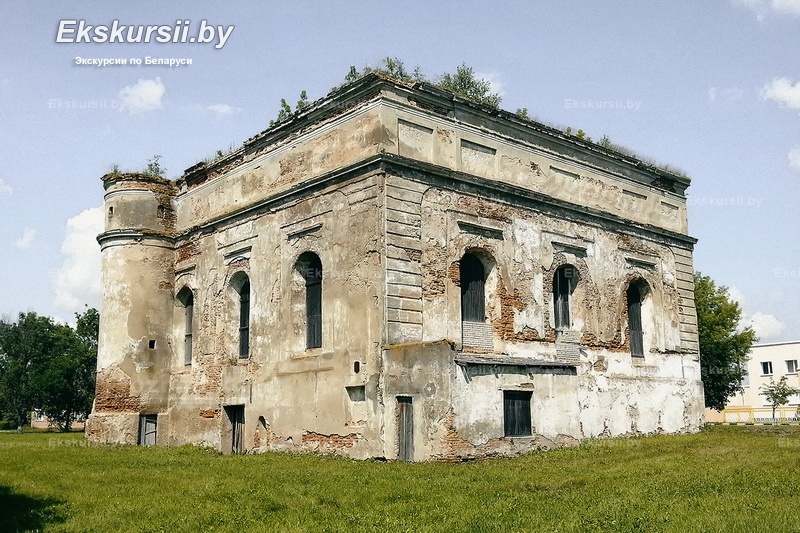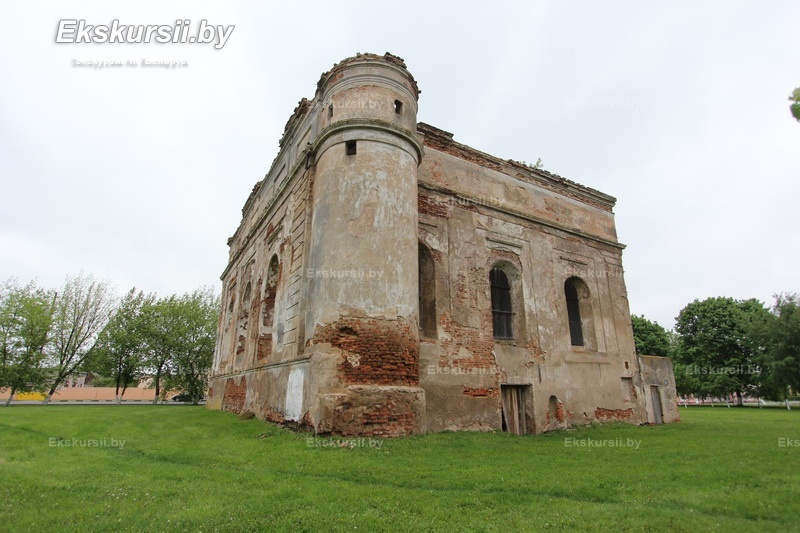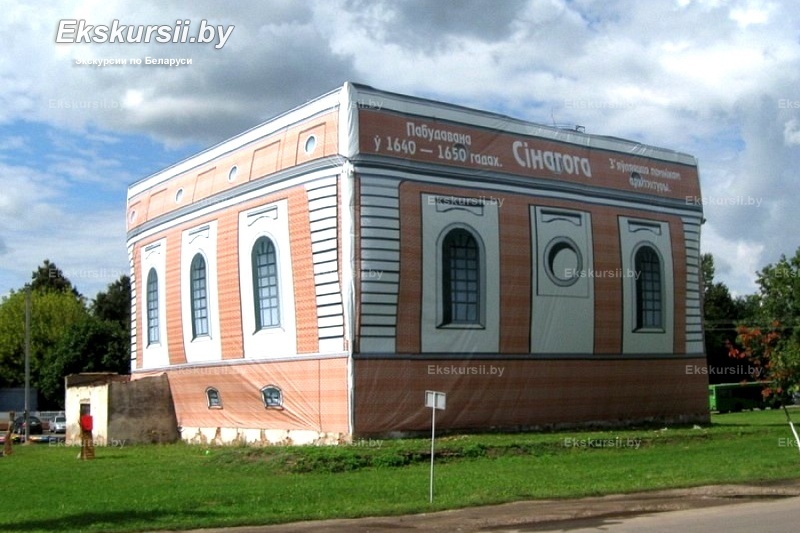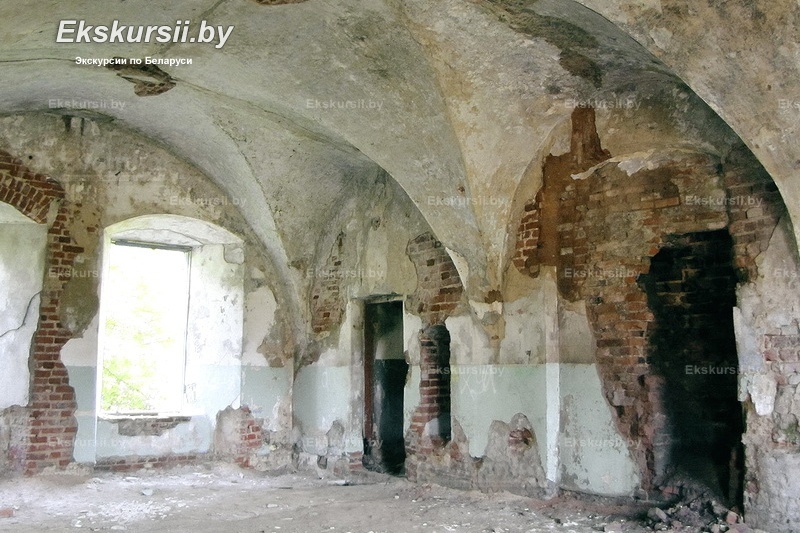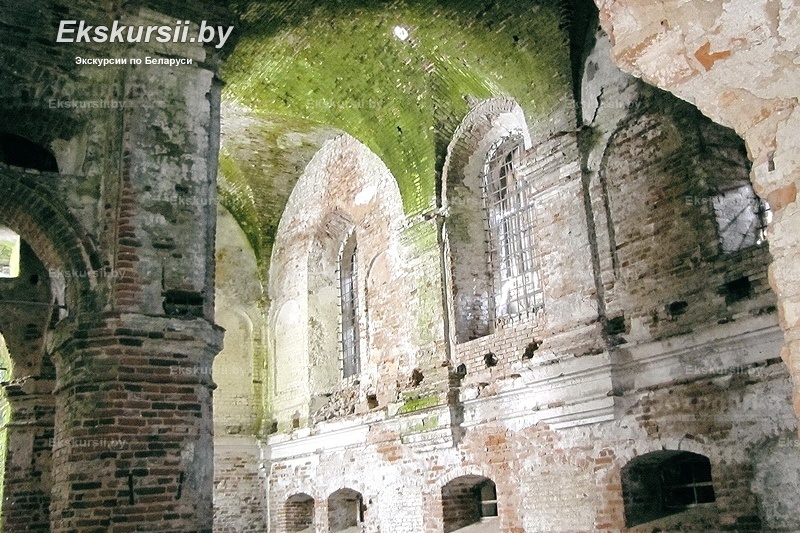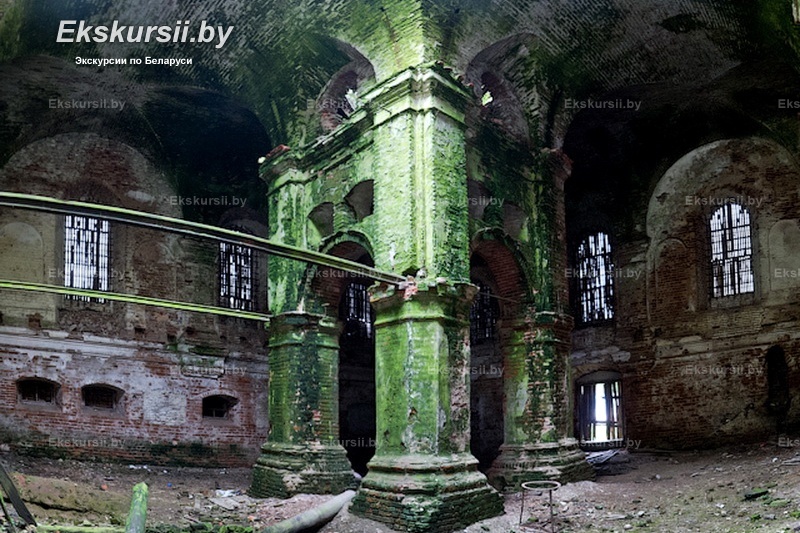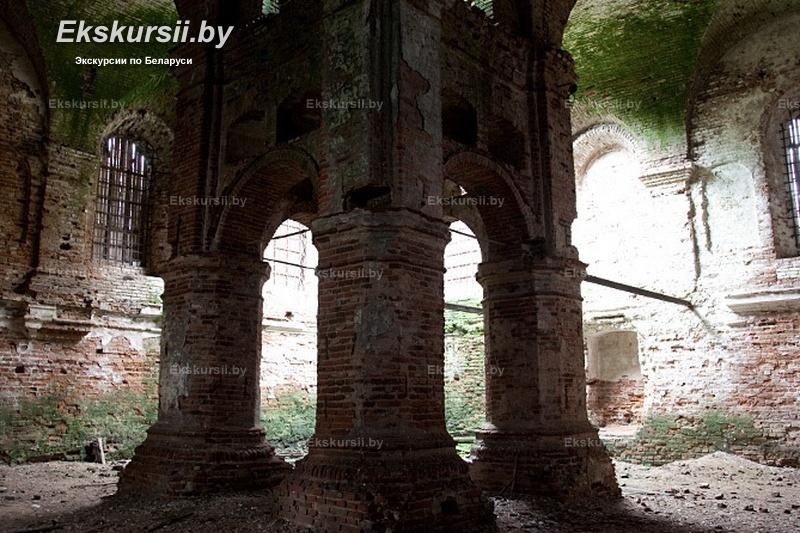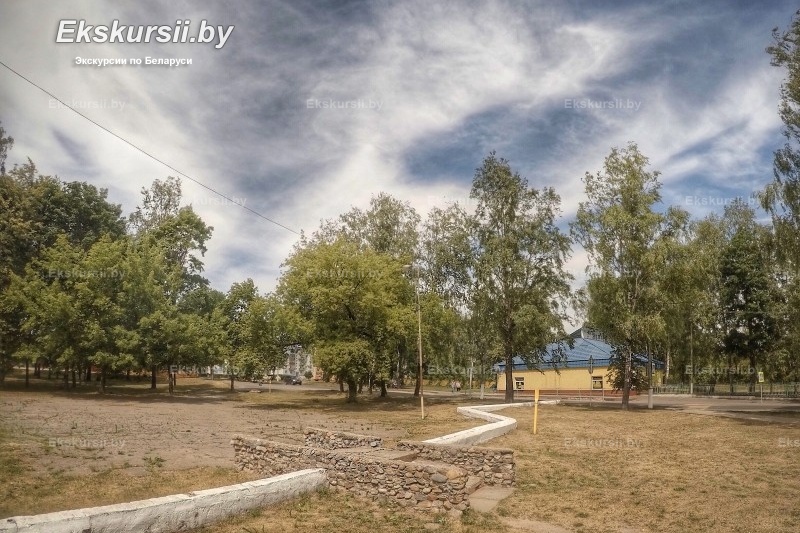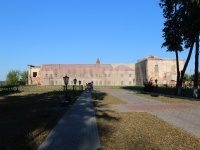History of the development
The first mention of Bykhaw dates back to 1430. Here was one of the best Non-ferrous metallurgy factries in XVI-XVIII centuries, where the masters of the highest qualifications produced guns, cannons, bullets and much more, without which it was impossible to live in Europe in the Middle Ages. At the foundry cannon workshop there was also the famous Bykhaw weapons school.
Bykhaw (the regional center of the region, the city on the right bank of the Dnieper). Known as Old Bykhaw by documents from the XIV century. Bykhaw was owned by the Drutsk princes, after which the city passed to Gashtold. In 1542 the possession of magnates Chodkiewicz (XVI century), in 1628 the Sapegi became the owners of the city.
At the end of the XVI - beginning of the XVII century Hetman of the Grand Duchy of Lithuania K. Chodkiewicz, and then Sapieha turn Bykhaw into a powerful fortress. Earthen ramparts, ditches, bastions with a semi-ring closed the territory of the city, the eastern side of which went out to the steep bank of the Dnieper. The center of the settlement’s composition was the Bykhaw Castle: it was located at the head of the plan, above the Dnieper, in front of it was a vast area, on both sides of which residential areas were divided on a regular basis. The square divided the territory of the city into two parts and was a ground for training soldiers of the garrison of the fortress. The main street, which was locked by the Mogilev and Rogachev entrance gates, opened from the north to the south.
Bykhaw presented an example of a fortress city for the location and service of a significant tycoon army. The history testifies to the high role of the fortified city in the battles of past eras: in the war of 1648-1654. For some time, the troops of F. Garkusha (1648) were under siege during the Russian-Polish War of 1654-1667. - I. Zolotarenko, in the Northern War of 1700-1721. The fortress suffered a siege twice.
In 1662, an Austrian diplomat and traveler Augustin Meyerberg drove past the city on the Dnieper, who mentioned this event in his report.
In the XVII-XVIII centuries. there were only two monumental stone buildings in the city: the castle of the feudal lord and the synagogue, all other buildings were wooden. In the conditions of sieges and fires they were destroyed. Preserved with significant losses, only the castle and the synagogue. The existing Orthodox church is located far from the old monuments of architecture and is not connected with them by the architectural-planning composition, which is explained by the later time of its construction (XIX century).
Russian military coat of arms of Bykhaw - two crossed guns (1781).
At the beginning of the XVIII century Bykhaw survived the siege twice. First, in 1702, during when the troops of the anti-Sapega coalition laid siege to the stronghold of Sapieha, after which the city became the possession of the artillery general K. K. Sinitsky. Then, during the Northern War (1700-1721), when K. K. Sinitsky took the side of the new king of the Commonwealth Stanislav Leschinsky, Bykhaw was taken by the Russian army after almost a long siege (almost a month) and almost all was burned. For more than seven years, the Russian garrison was in Bykhawa.
In the summer of 1706, Peter I. visited Bykhaw on his way to Kiev.
At the first partition of the Polish-Lithuanian Commonwealth in 1772 Bykhaw went to Russia. The Bykhaw plan was approved in 1778, the coat of arms in 1781. The coat of arms was a shield, on a red background of which two cannons are shown crosswise.
On November 5, 1842, a two-class parish school was established in the city, instead of a single-class parish school, which was maintained by the Canon Regular monastery until the transfer to the treasury of populated and owned estates.
At the end of the XIXth century, about six and a half thousand people lived in the city, mainly Belarusians (3,077 people) and Jews (3,036 people). From 1902 Bykhaw - railway station.
From September 12 to November 20, 1917, the participants in the Kornilov plot, headed by Lavr Georgievich Kornilov, were held in a two-story building of a women's gymnasium. On November 20, 1917, Kornilov at the head of the Tekinsky cavalry regiment, escorted by the townspeople, left Bykhaw and left for the Don. The definition of "Bykhawets" among the participants of the White movement was one of the most honorable.
On July 8, 1941, the advance units of the German 46th motorized corps approached Mogilev and, after bombarding by Luftwaffe, attacked the front edge of the 172nd infantry division at the junction of the 514th and 388th infantry regiments. Having penetrated into the division's defense, the German units lost at least 40 tanks, in connection with which they stopped frontal strikes and went north of Shklov and from Bykhaw with the aim of a tank breakthrough in converging directions for circumventing and surrounding the resistance node at Mogilyov.
Until the early 1990s, a naval aviation garrison of the Baltic Fleet and a Tu-16 missile carrier base were located in Bykhaw, which were later replaced by a Tu-22M2.
Tourism potential
Feudal Bykhaw Castle of XVII century, was built in 1610-1619 by the great Lithuanian hetman Jan Karol Chodkiewicz, as a defense structure. It was surrounded by earthen ramparts, surrounded by a moat, reinforced with faceted defensive towers. From the north the courtyard is separated by a fortress wall. In the castle, oriented to the Dnieper, there were ceremonial halls and living rooms, the entrance to which went through the arcade gallery. Partially preserved.
Synagogue, Baroque monument of the early XVIIth century, with thick, almost two-meter walls, a round tower and loopholes - it locked the entrance from the adjacent streets of the northwestern part of the city. It has simple cornices, shallow rectangular niches. Windows with semi-circular arched finishes are placed high. The square hall inside is divided by four pillars into nine equal parts, covered with arches.
Trinity Church of XIX century, decorated with a high three-tiered bell tower (a bright monument of wooden architecture).
10 km from Bykhaw, the village of Ludchitsy has a height - a place of fierce fighting in 1944. On staff maps, it was marked 150.9. In 1984, at this height, the Memorial of Military Glory was opened.
10 km from Bykhaw is the village of Borkolabovo, which went down in history as the place of creation of the cultural monument of the Belarusian alphabet of the beginning of the XVII century - the Barkulab Chronicle. Chronologically, it covers the period from 1545 to 1608.
